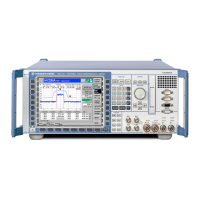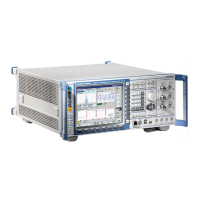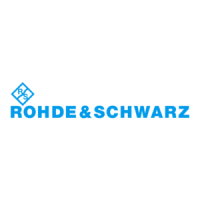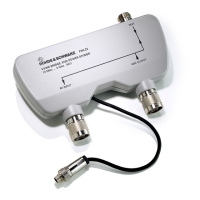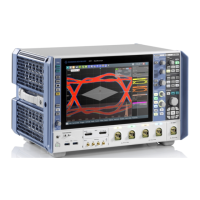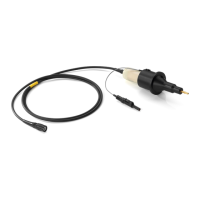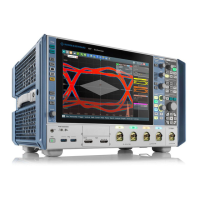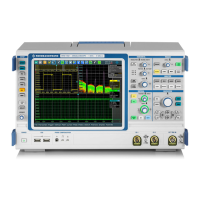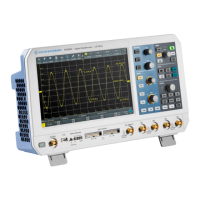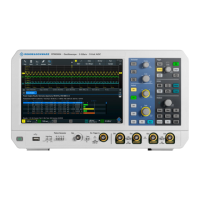R&S CMU Instrument Design and Function Description
1100.4903.82 3.9 E-5
REFERENCE BOARD
The REFERENCE BOARD provides all required clock signals (NETCLK1/2) and reference frequencies
(110.8 MHz) as well as the +5 VDC reference voltage for the R&S CMU. The REFERENCE BOARD is a
plug-in module in HVC design.
D
esign
At the top of the module, nine MMCX connectors are attached, which
serve as inputs or outputs for various clock signals and are routed to the
respective modules or the integrated rear panel with appropriate coax
cables.
Two holes in the HVC panel at the top are used for adjusting the
+5 VDC reference voltage and the 10 MHz TCXO reference frequency.
Connection
The plug-in module REFERENCE BOARD is inserted in the R&S CMU
on the right side on MOTHERBOARD2 using a 48-pin FUTURE-bus
connector.
REFERENCE
frequency generation
All frequencies provided by the R&S CMU are derived from internal high-
precision 10-MHz reference elements (TCXO or optional OCXO) or from
externally applied frequencies.
A 110.8-MHz crystal oscillator is coupled in locked phase relation in a
PLL loop with the selected reference.
The reference element TCXO is used as standard on the reference
board. If the option OCXO (R&S CMU-B11 or -B12) is installed in the
R&S CMU, it is automatically used as reference element and the
standard TCXO is switched off.
It is additionally possible to switch over to external synchronization (see
Connection Control – Synch. in Chapter 4 of the R&S CMU operating
manual) and use the signal fed in at the BNC connector REF IN at the
rear of the R&S CMU as reference signal.
At the BNC connector REF OUT1 at the rear of the R&S CMU, either the
internal 10-MHz reference frequency or the signal applied at REF IN can
be buffered and tapped depending on the selected reference element.
The 110.8-MHz sinewave signal of the crystal oscillator passes a
harmonics filter, is buffered and provided at three MMXC connectors,
serving as reference frequency for the RXTX BOARD1/2 and the
DIGITAL BOARD.
At a further MMCX connector, the TTL signal RESFREQ is available with
27.7 MHz (110.8 MHz / 4) for the option R&S CMU-B41, Audio Generator
and Analyzer, as clock signal.
Netclock generation
The REFERENCE BOARD is also used for netclock generation,
providing adjustable TTL clock frequencies from 21 MHz to 84 MHz with
a very high frequency resolution of 0.1 Hz. This function is provided twice
so that two independent netclock frequencies are available at the same
time.
The signal generated by the 110.8-MHz crystal oscillator is divided by
three and applied to a DDS (Direct Digital Synthesis) circuit. The DDS
circuit is used as a fine-adjustable frequency divider and generates a
divided signal between 9 MHz and 12 MHz.
This signal is then used in a further PLL as nominal value for the phase
detector in order to tune a VCO (Voltage Controlled Oscillator) with a
tuning range of 84 MHz to 168 MHz in locked phase relation.
A fractional divider used in the feedback of the PLL provides the actual
value for the phase detector.
The output signal of the VCO is divided by two or four, buffered and
provided at the MMCX connector NETCLK 1 or NETCLK 2 and serves as
network-specific TTL clock for the DIGITAL BOARD.
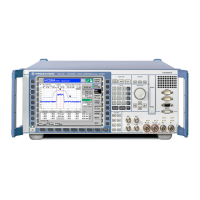
